André Hunebelle was a French maître verrier and film director.

Raymond Rouleau was a Belgian actor and film director. He appeared in more than 40 films between 1928 and 1979. He also directed 22 films between 1932 and 1981. Rouleau studied at the Royal Conservatory of Brussels, where he met Tania Balachova. They emigrated to Paris together and collaborated with a variety of directors at the cutting edge of French theatre, including Charles Dullin and Gaston Baty. They married in France and separated in 1940. He subsequently married the actress Françoise Lugagne.
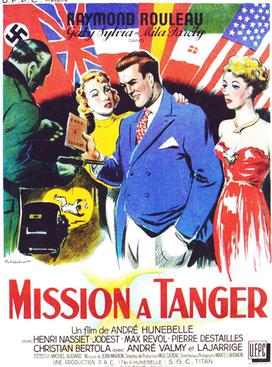
Mission in Tangier is a 1949 French spy thriller film directed by André Hunebelle and starring Raymond Rouleau, Gaby Sylvia and Mila Parély. It was the first in the trilogy of films featuring dashing reporter Georges Masse, and was followed in 1950 by Beware of Blondes. It was shot at the Billancourt Studios in Paris. The film's sets were designed by the art director Lucien Carré. It has been described as a French film noir.
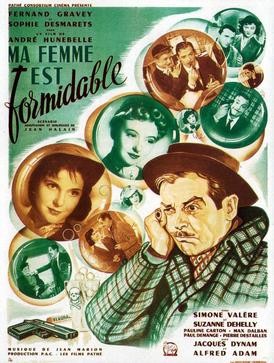
My Wife Is Formidable is a 1951 French comedy film directed by André Hunebelle and starring Fernand Gravey, Sophie Desmarets and Simone Valère. It was shot at the Saint-Maurice Studios in Paris. The film's sets were designed by the art director Lucien Carré. It was followed by a loose sequel My Husband Is Marvelous in 1952.
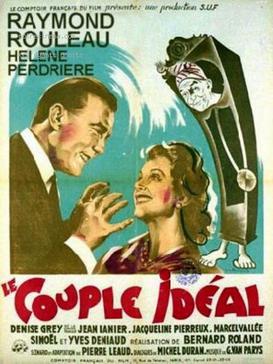
The Ideal Couple is a 1946 French comedy film directed by Bernard-Roland and Raymond Rouleau and starring Raymond Rouleau, Hélène Perdrière and Denise Grey.

Bernard and the Lion is a 1951 French comedy film directed by Robert Dhéry and starring Dhéry, Gérard Calvi and Roger Saget.

The Secret of Madame Clapain is a 1943 French crime film directed by André Berthomieu and starring Raymond Rouleau, Line Noro and Michèle Alfa.

The Honourable Catherine is a 1943 French comedy film directed by Marcel L'Herbier and starring Edwige Feuillère, Raymond Rouleau and André Luguet. Some of the film's final scenes were directed by an uncredited Jacques de Baroncelli. It was shot at the Buttes-Chaumont Studios in Paris. The film's sets were designed by the art director André Barsacq.
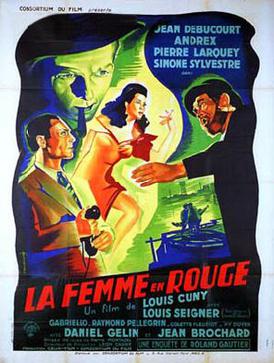
The Woman in Red is a 1947 French crime film directed by Louis Cuny and starring Jean Debucourt, Pierre Larquey and Andrex.

The Girl with the Whip is a 1952 Swiss drama film directed by Jean Dréville and starring Michel Simon, Gaby Morlay and Colette Darfeuil. It was shot at the Boulogne Studios in Paris. The film's sets were designed by the art director Robert Dumesnil. A separate German version, The Secret of the Mountain Lake, was also made.
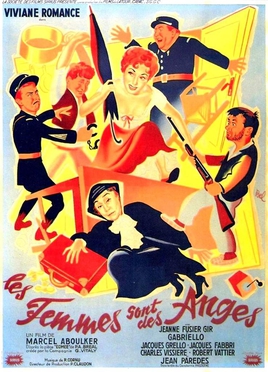
Women Are Angels is a 1952 French comedy film directed by Marcel Aboulker and starring Viviane Romance, Jeanne Fusier-Gir and André Gabriello. The film's sets were designed by the art director Georges Petitot.

First Ball is a 1941 French romantic comedy film directed by Christian-Jaque and starring Marie Déa, Fernand Ledoux and Raymond Rouleau. It was shot at the Saint-Maurice Studios in Paris. The film's sets were designed by the art director René Renoux.

Vertigo is a 1947 French drama film directed by Richard Pottier and starring Raymond Rouleau, Micheline Francey and Jean Debucourt. The film's sets were designed by the art director Robert Hubert.

Murders is a 1950 French drama film directed by Richard Pottier and starring Fernandel, Mireille Perrey and Jacques Varennes. The film is adapted from a series of five novels by Belgian writer Charles Plisnier, published between 1939 and 1941. It marked a rare dramatic role for the comedian Fernandel. It was shot at the Neuilly Studios in Paris. The film's sets were designed by the art director Paul-Louis Boutié. The title is also written as Murders?.
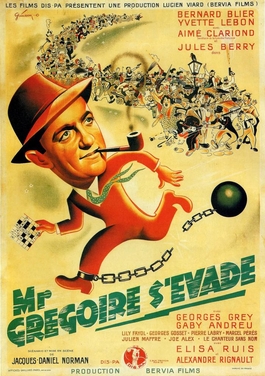
Monsieur Grégoire Escapes is a 1946 French comedy film directed by Jacques Daniel-Norman and starring Bernard Blier, Yvette Lebon and Jules Berry. It was shot at the Buttes-Chaumont Studios in Paris. The film's sets were designed by the art director Robert Hubert.
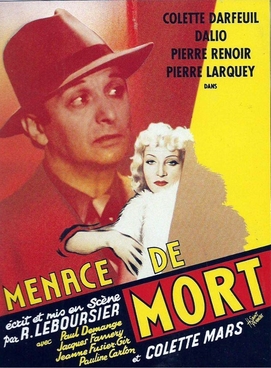
Death Threat is a 1950 crime drama film directed by Raymond Leboursier and starring Colette Darfeuil, Pierre Renoir and Jean Martinelli. The film's sets were designed by the art director Roland Quignon. It is also known by the alternative title Aventure à Pigalle.

Desperate Decision is a 1952 French drama film directed by Yves Allégret and starring Danièle Delorme, Henri Vidal and Jean Debucourt. It was shot at the Joinville Studios in Paris. The film's sets were designed by the art director Alexandre Trauner.
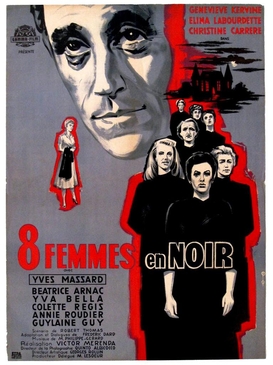
The Night of Suspects is a 1960 French crime film directed by Víctor Merenda and starring Geneviève Kervine, Christine Carère and Elina Labourdette. Based on the play Huit femmes by Robert Thomas it was shot in 1957 but its release was delayed for several years. The film's sets were designed by the art director Claude Bouxin. It is also known by the alternative title Eight Women in Black.

The Woman I Loved Most is a 1942 French drama film directed by Robert Vernay and starring Arletty, Mireille Balin and Lucien Baroux. It was shot at the Cité Elgé Studios in Occupied Paris. The film's sets were designed by the art director René Renoux.
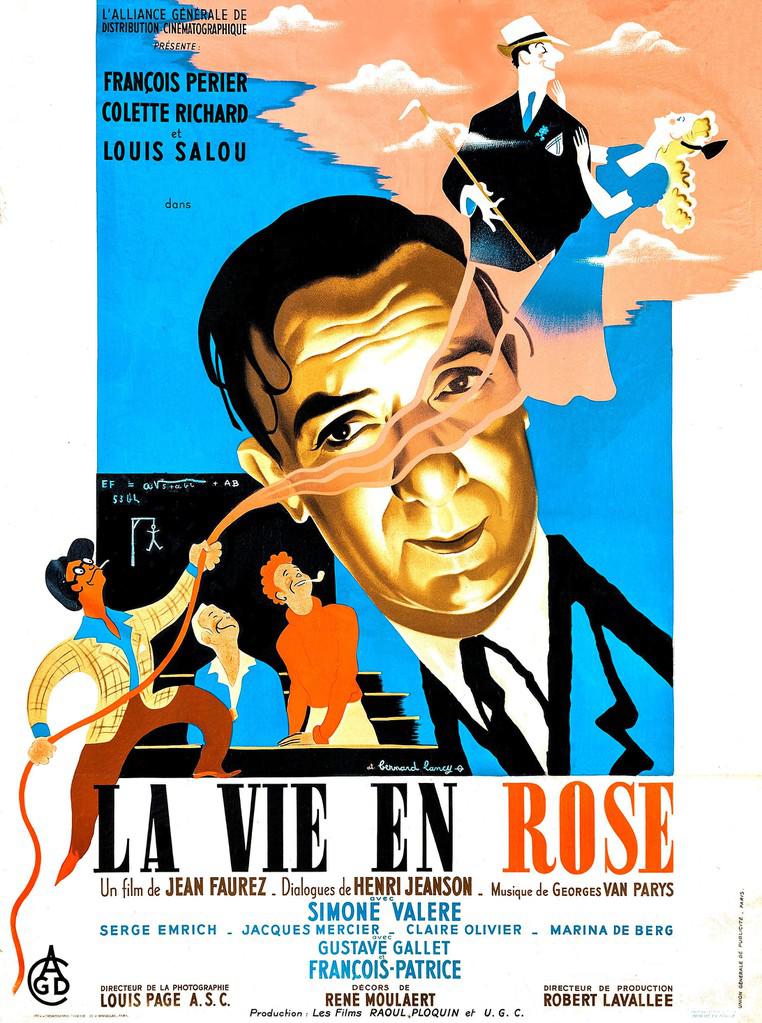
The Loves of Colette is a 1948 French drama film directed by Jean Faurez and starring François Périer, Colette Richard and Louis Salou. The film's sets were designed by the art director René Moulaert. The French title shares its name with the song La Vie en rose by Edith Piaf.



















